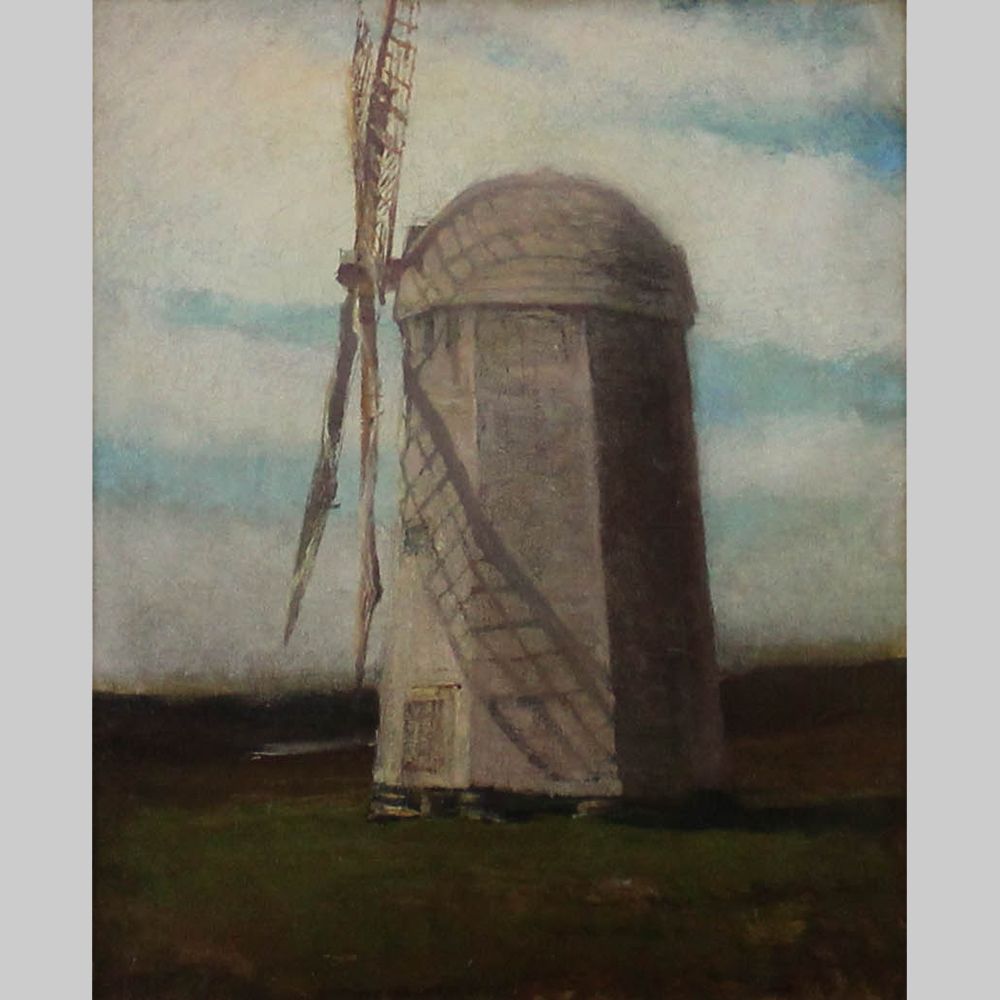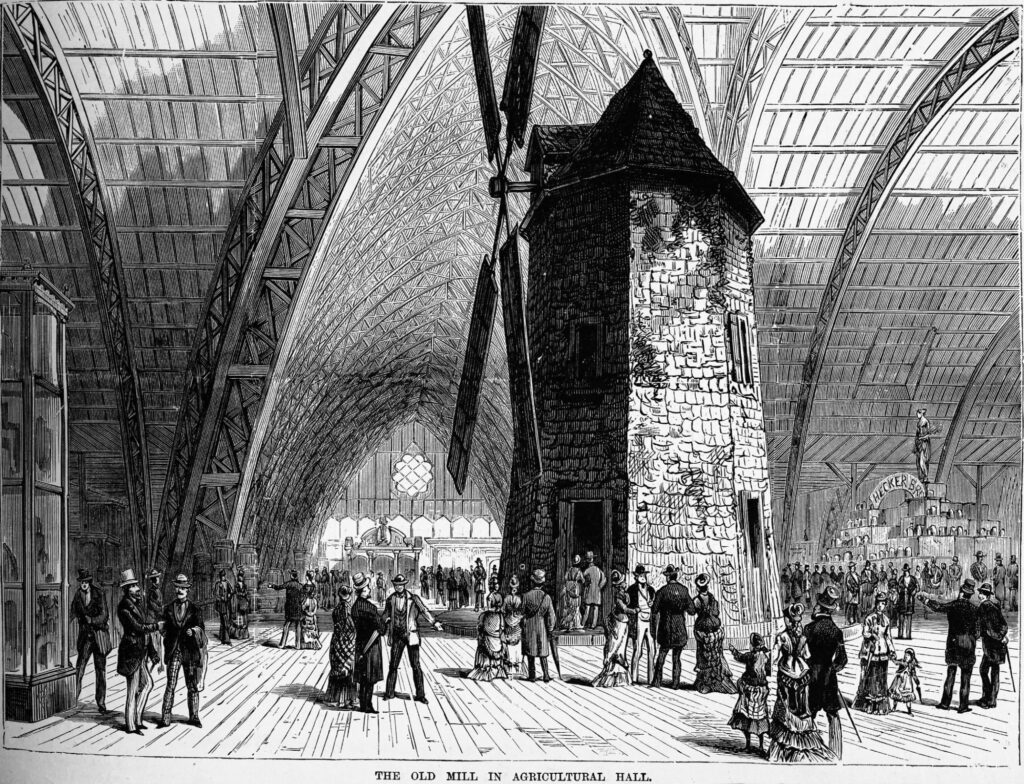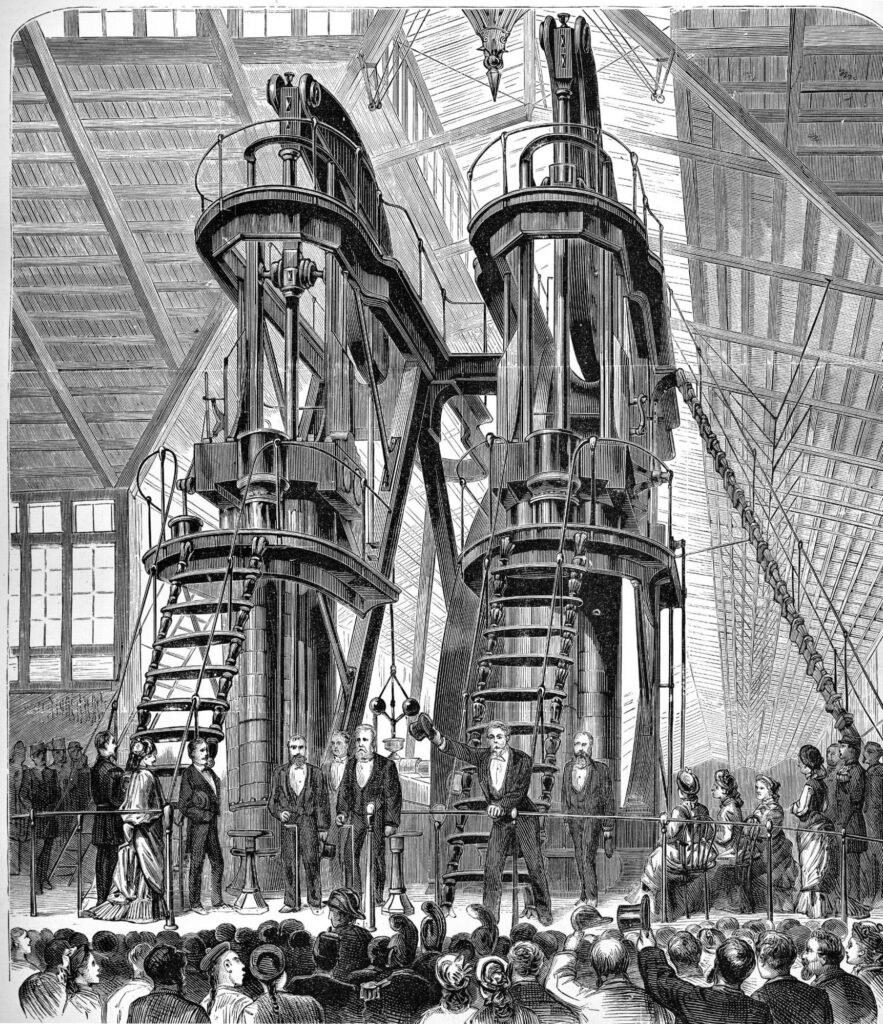John La Farge (1835–1910)
Windmill (Newport, Windmill, near Easton’s Pond. Early Spring, Southeast Wind), 1864
Oil on canvas
McMullen Museum of Art, Boston College, Gift of Christian Vareika ’09 and Hope Vareika ’15, 2018.67

Jeffery Howe
Professor Emeritus, Art History

Contrasts of pre-industrial life with new technologies of the nineteenth century were particularly evident in New England. An important source of power for the early growth of the regional economy, windmills by mid-century had become museum artifacts. In Philadelphia’s Centennial Exhibition of 1876, the windmill was relegated to a historic display in the Agricultural Hall (see image). In the next building, visitors could see the future of industrial power: a colossal two-cylinder steam engine built in Providence capable of generating the astonishing power of 140 horses (see image).
La Farge’s friend, Henry Adams, found a new metaphor for the divine in the technology displayed at the Centennial Exhibition. In a later essay titled “The Dynamo and the Virgin” he contrasts the Middle Ages with the modern world, writing: “The dynamo became a symbol of infinity … [and] he began to feel the forty-foot dynamos as a moral force, much as the early Christians felt the Cross.” The traditional windmill, emblematic of natural power, was eclipsed by the new technologies.


